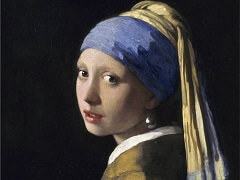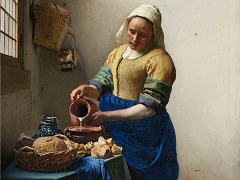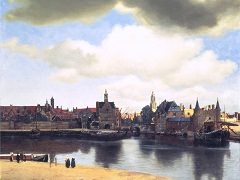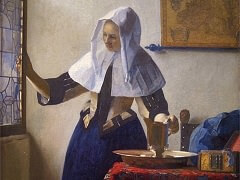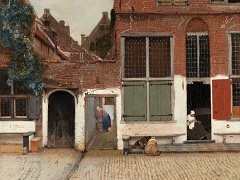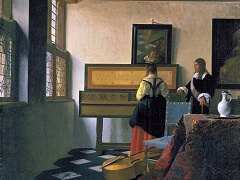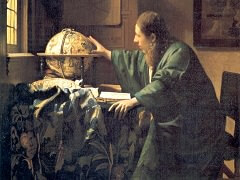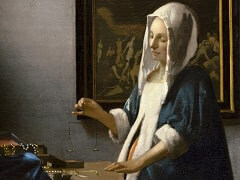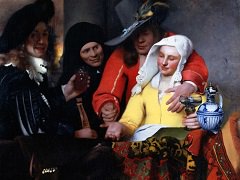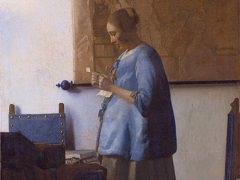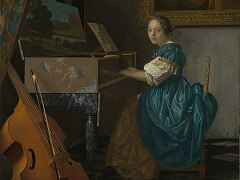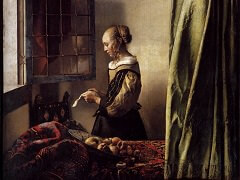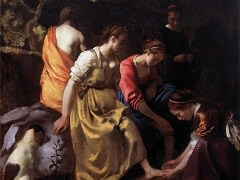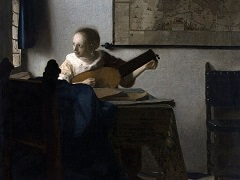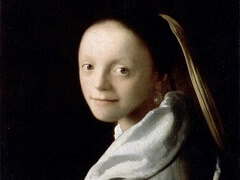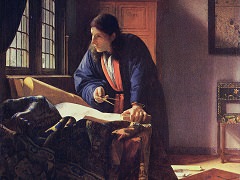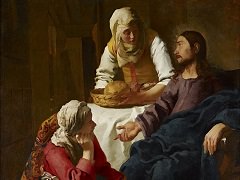A Lady Writing a Letter, 1665 by Johannes Vermeer
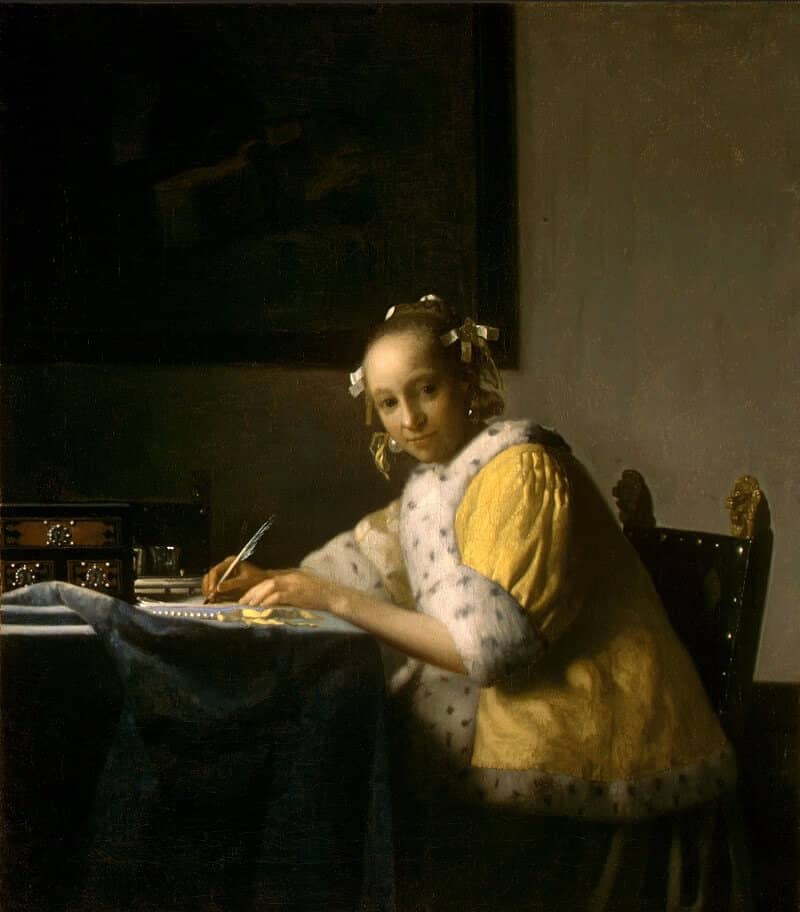
Above all, Vermeer was a painter of light. In his study of optics he undoubtedly used a camera obscura, or "darkened chamber,"" the ancestor of the modern photographic camera. This scientific device employed an adjustable lens and
mirrors to capture reflected light and project the scene onto a viewing screen in its lid.
Vermeer analyzed the resulting images carefully because they duplicate the selective focus of the human eye. Only objects at a certain distance from the camera or the eye are in sharp focus. This is exactly the optical effect
Vermeer has generated here. Precise white highlights glisten from the writing box, pearl earrings, satin hair ribbons, and the chair's brass tacks - all of which lie equally in the middle distance. The near tablecloth is purposely
blurred, and the painting on the far wall is hazy. This is just as they would look to someone concentrating specifically on the woman. Because she directly faces the viewer with an open gaze, the painting may be a portrait.
Most of the thirty-five or so paintings that now are thought to be Vermeer's creations share the same setting, his parents' home, which he inherited.

